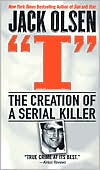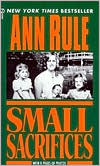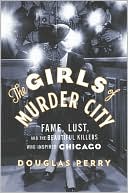I: The Creation of a Serial Killer
In The Killer's Own Words...\ "I killed Tanya Bennett...I beat her to death, raped her and loved it. Yes I'm sick, but I enjoy myself too. People took the blame and I'm free.... . Look over your shoulder. I may be closer than you think."-Keith Hunter Jesperson, the Happy Face Killer\ In February 1990, Oregon State Police arrested John Sosnovke and Laverne Pavlinac for the vicious rape and murder of 23-year-old Taunja Bennet. Pavlinac had come forth and confessed, implicating her boyfriend...
Search in google:
In The Killer's Own Words..."I killed Tanya Bennett...I beat her to death, raped her and loved it. Yes I'm sick, but I enjoy myself too. People took the blame and I'm free.... . Look over your shoulder. I may be closer than you think."-Keith Hunter Jesperson, the Happy Face KillerIn February 1990, Oregon State Police arrested John Sosnovke and Laverne Pavlinac for the vicious rape and murder of 23-year-old Taunja Bennet. Pavlinac had come forth and confessed, implicating her boyfriend and producing physical evidence that linked them to the crime. Authorities closed the case. There was just one problem. They had the wrong people...Keith Hunter Jesperson was a long haul truck driver and the murderer of eight women, including Taunja Bennet. He began a twisted one-man campaign to win the release of Sosnovke and Pavlinac. To the editors of newspapers and on the walls of highway rest stops, Jesperson scribbled out a series of taunting confessions. At the end of each confession, Jesperson drew a happy face, earning for himself the grisly sobriquet "The Happy Face Killer." Based on access to interviews, diaries, court records, and the criminal himself, I: The Creation of a Serial Killer is Jesperson's chilling story. Edgar Award winner Jack Olsen lets the killer tell his story in his own words, offering unprecedented insight into the twisted thought process of a serial murderer. "Jack Olsen has hit the target again...a valuable, illuminating look into the phenomenon of the murdering mind." -Maury Terry, best-selling author of The Ultimate Evil"The most disturbing and illuminating book ever written. Bar none. `I' is not for the faint of heart, but for those willing to go to the darkest depths of human depravity to understand the incomprehensible."—Gregg Olsen, bestselling author of Abandoned Prayers Publishers Weekly Veteran true-crime writer Olsen (Salt of the Earth, etc.) takes the profiling of a psychopath a step farther than usual; drawing on interviews and his subject's own diaries to intimately reveal the life and inner workings of Keith Hunter Jesperson, currently serving life in prison for the murders of eight women in the 1990s. Jesperson was called the "Happy Face Killer" for his token symbol on taunting letters sent to authorities. Cutting between Jesperson's rough rural childhood in the Pacific Northwest (with a hard-drinking, belt-swinging father who put him to work and charged room and board), and his mad glee in hunting down, raping and strangling women, the book plays more like a carefully detailed autobiography than a neutral investigation. While the gruesome details are nailed down with morbid precision, some readers may be disturbed by Olsen's abandonment of the objective narrator's voice in chapters where the first-person account puts the reader right inside the madman's mind it's a distinctly unpleasant place, where women are "lot lizards" and "bitches" paraded toward rape and death. Even chapters in the third person clearly represent Jesperson's viewpoint. Olsen's writing is clear and concise, but the voyeurism of the murder scenes will disturb some readers, and the attempt to create understanding of a serial murderer might be interpreted by others as an attempt to create sympathy. Eight pages b&w photos not seen by PW. (Aug. 20) Copyright 2002 Cahners Business Information.
\ From Barnes & NobleIn 1990, Oregon State Police arrested a couple for the savage rape and murder of a 23-year-old woman. One newspaper reader realized that the cops had made a grievous error and began a solitary campaign to win freedom for the wrongfully accused couple. But the man was no zealot libertarian or maverick investigator; he was the killer. In several chilling letters, Keith Hunter Jesperson reenacted the gruesome attack and slaughter of not just one woman but eight. At the bottom of each taunting confession, he drew a crude happy face, earning him an ironic nickname. Using those documents and exclusive interviews, award-winning true-crime author Jack Olsen takes us into the mind of one of the most sadistic serial murderers in our history. A riveting, heart-stopping book.\ \ \ \ \ From the Publisher\ "This book is like an avalanche: it starts strong and rapidly gains momentum as it cascades downward on its destructive journey of serial murder. Truly insightful."-Maury Terry, bestselling author of The Ultimate Evil\ "It is probably impossible for any law-abiding citizen like the author and most of his readers to understand a homicidal psychopath-especially one not only driven to kill but also driven to get caught. Given the odds, Olsen explains [Keith Hunter] Jesperson to an amazing degree."\ -Seattle Times/Post Intelligencer\ "Olsen was the most prolific, innovative writer of serious true crime books in recent memory."\ -San Francisco Chronicle\ "For the genre, this is crackerjack stuff. Olsen obviously had thorough access to Jesperson...his family, and friends...True-crime entertainment at its best." -Kirkus Reviews\ "Veteran true-crime author Olsen takes the profiling of a psychopath a step farther than usual...the gruesome details are nailed down with morbid precision...Olsen's writing is clear and concise."-Publishers Weekly\ "Jack Olsen has hit the target again...a valuable, illuminating look into the phenomenon of the murdering mind."-Maury Terry, best-selling author of The Ultimate Evil\ "The most disturbing and illuminating book ever written. Bar none. 'I' is not for the faint of heart, but for those willing to go to the darkest depths of human depravity to understand the incomprehensible."--Gregg Olsen, bestselling author of Abandoned Prayers\ \ \ \ \ Publishers WeeklyVeteran true-crime writer Olsen (Salt of the Earth, etc.) takes the profiling of a psychopath a step farther than usual; drawing on interviews and his subject's own diaries to intimately reveal the life and inner workings of Keith Hunter Jesperson, currently serving life in prison for the murders of eight women in the 1990s. Jesperson was called the "Happy Face Killer" for his token symbol on taunting letters sent to authorities. Cutting between Jesperson's rough rural childhood in the Pacific Northwest (with a hard-drinking, belt-swinging father who put him to work and charged room and board), and his mad glee in hunting down, raping and strangling women, the book plays more like a carefully detailed autobiography than a neutral investigation. While the gruesome details are nailed down with morbid precision, some readers may be disturbed by Olsen's abandonment of the objective narrator's voice in chapters where the first-person account puts the reader right inside the madman's mind it's a distinctly unpleasant place, where women are "lot lizards" and "bitches" paraded toward rape and death. Even chapters in the third person clearly represent Jesperson's viewpoint. Olsen's writing is clear and concise, but the voyeurism of the murder scenes will disturb some readers, and the attempt to create understanding of a serial murderer might be interpreted by others as an attempt to create sympathy. Eight pages b&w photos not seen by PW. (Aug. 20) Copyright 2002 Cahners Business Information.\ \ \ \ \ Library JournalDuring the 1990s, the Pacific Northwest was besieged by a serial killer, Keith Hunter Jesperson, who taunted the police for incarcerating the wrong people for one of his eight victims; he signed his letter to the police with a happy face and hence became known as the Happy Face Killer. Renowned true-crime author Olsen (Hastened to the Grave) uses diaries, court records, and interviews with the killer himself to present Jesperson's version of why he became a serial killer and how he killed his victims. As a truck driver, he was able to travel cross-country and kill young women who, he thought, were going to present a problem for him. With each of his victims, he played a "death game" in which he choked them, then revived them a few times before killing them. The book's flaw is that it is one-sided. The reader is not told how law enforcement officers caught on to Jesperson or about the trial. Nor does it provide details as to what happened to the wrongly convicted. Nevertheless, Olsen's popularity in the genre will make this a popular choice for public libraries. Michael Sawyer, Northwestern Regional Lib., Elkin, NC Copyright 2002 Cahners Business Information.\ \ \ \ \ Kirkus ReviewsVeteran true-crime author Olsen (Hastened to the Grave, 1998, etc.) explores the crimes and motivations of a truck-stop murderer. In an alternating first-person/third-person account, Olsen relates the story of Keith Hunter Jesperson, a.k.a. The Happy Face Killer, who murdered eight women in the early- to mid-1990s in the West and Pacific Northwest. The narrative flashes back and forth between a suspenseful chronicle of the murders and Jesperson's dysfunctional childhood. The black sheep of his family, brutalized physically and psychologically by his father, he grew into a powerful six-and-a-half-foot galoot capable of volcanic rage and with a penchant for torturing small animals. He drifted into a career as an over-the-road trucker, which offered the perfect half-invisible lifestyle for an angry loner. At first indulging his taste for rough, domineering sex with truck-stop prostitutes, Jesperson began to have homicidal fantasies and ultimately started murdering them by slow strangulation. Women who sold their bodies deserved their fate, he believed. He successfully eluded detection or suspicion but began to be plagued by guilt because two innocent people were wrongly jailed for his first murder; he deliberately became careless so that he could be tracked down and caught. The author examines various possible reasons why Jesperson became a serial killer, but his conclusion seems to be that given the right combination of harsh life experiences, rage, opportunity, and lack of self-control, almost anyone could go that route. The pretense of exploring and understanding Jesperson's psychology is a bit of a sham, as the real purpose here seems to be to serve up a titillating account of squalidmurders and violent sex. But for the genre, this is crackerjack stuff. Olsen obviously had thorough access to Jesperson (who is currently doing life), his family, and friends. One unexpected reward is the fascinating insider's glimpse of the world of long-haul truckers. True-crime entertainment at its best.\ \








